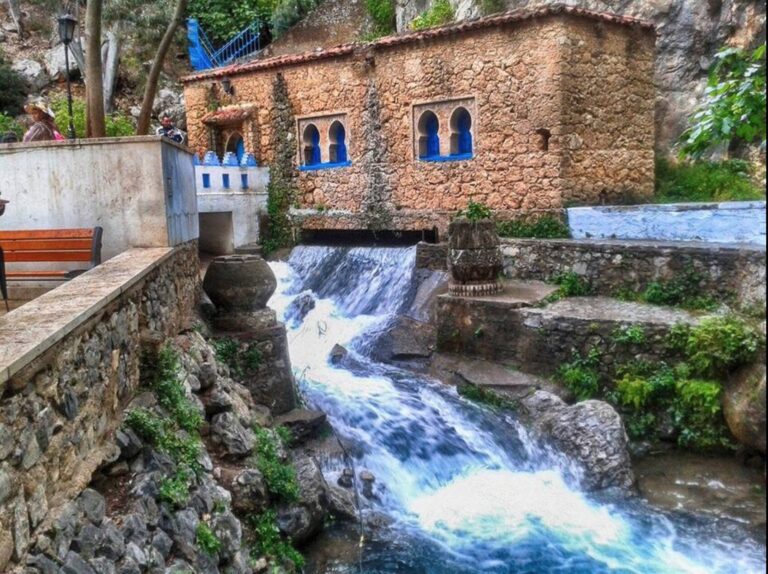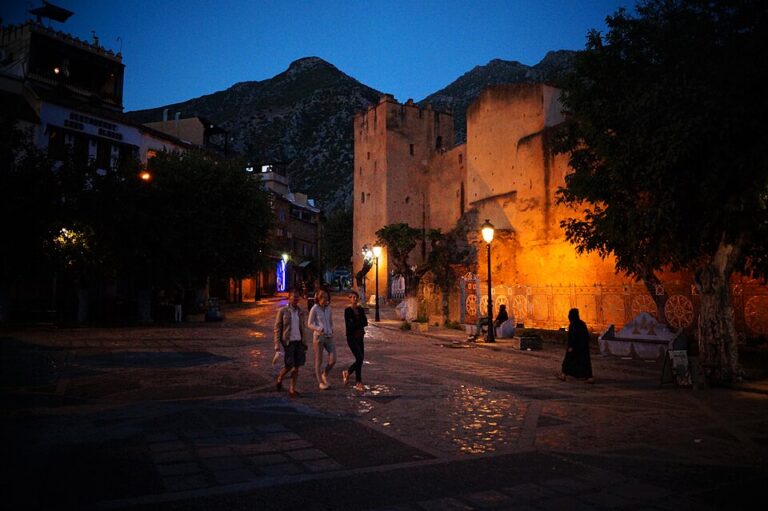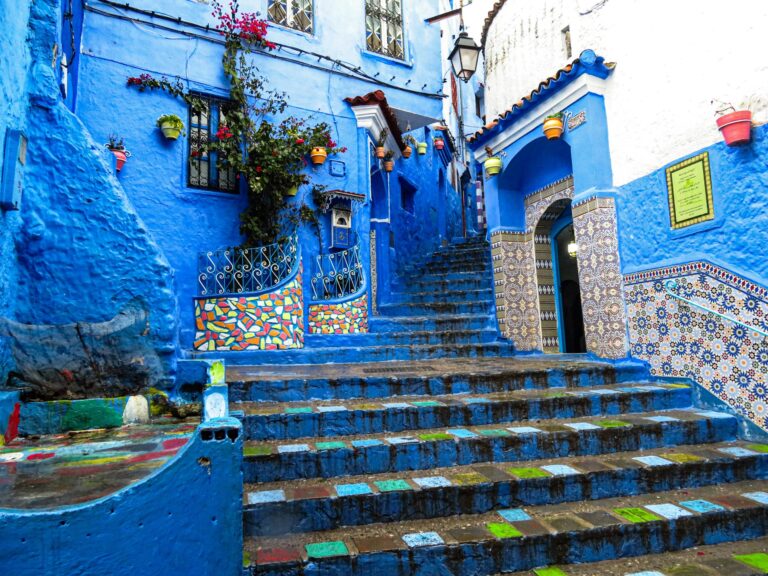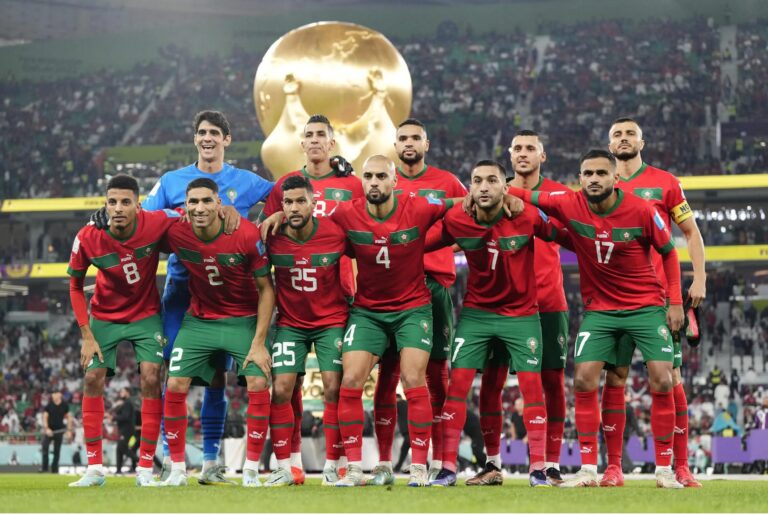
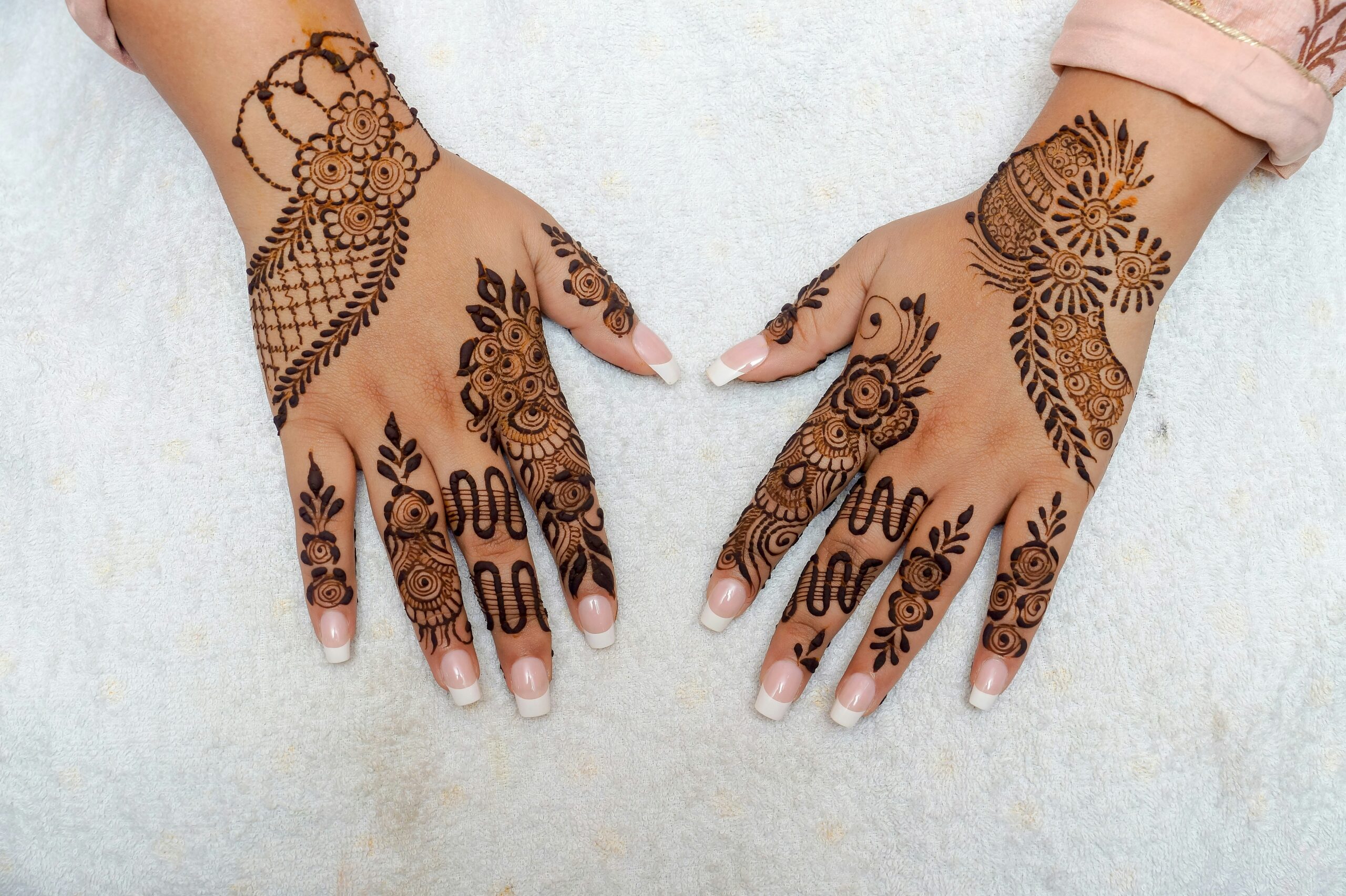
There’s something captivating about Morocco beyond its sweeping deserts and vibrant souks—the deep cultural traditions woven into everyday life. One of the most mesmerizing is Moroccan Henna: The Art of Colors and Traditional Designs. Whether you’re wandering through the maze-like streets of Marrakech or sipping mint tea in a Berber village, henna is an enchanting expression of Moroccan identity.
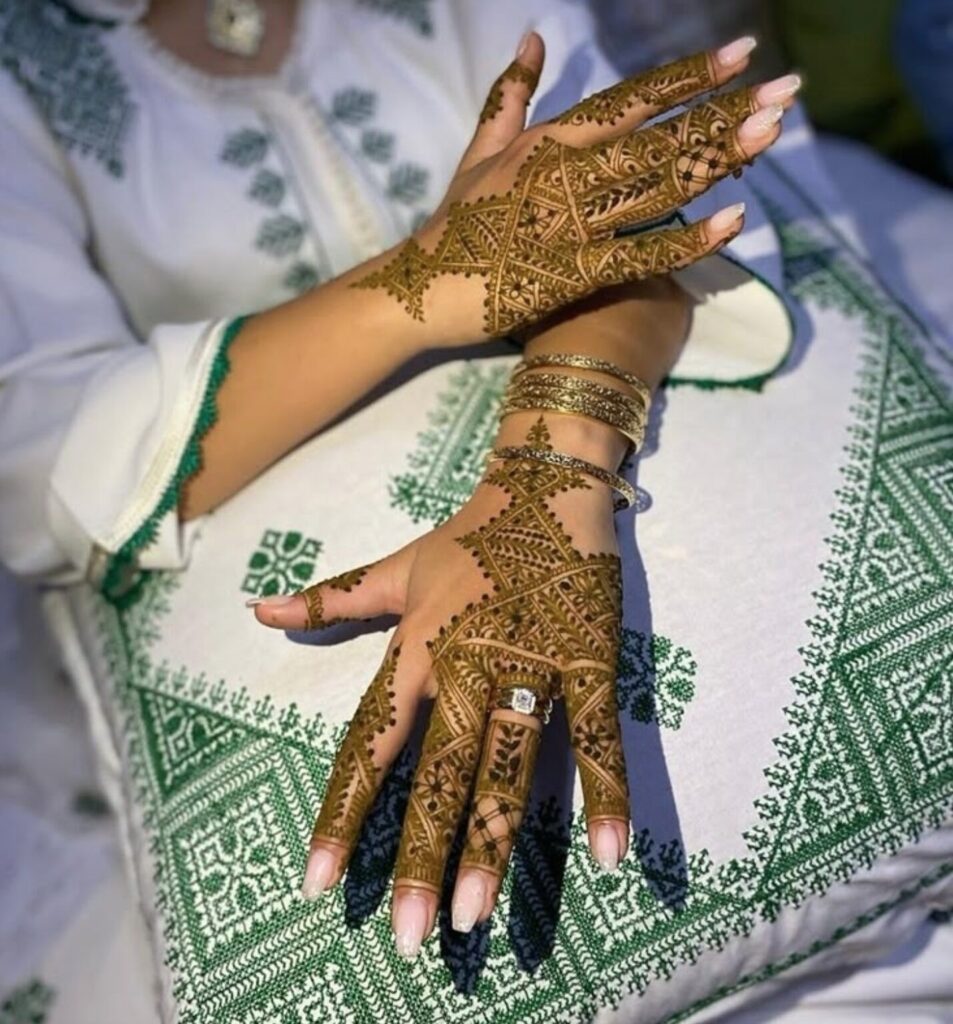
In this post, we’ll take you through the history, symbolism, and cultural relevance of Moroccan henna, how and where to experience it, and why it should be on your must-do list while traveling in Morocco.
The Ancient Art of Moroccan Henna
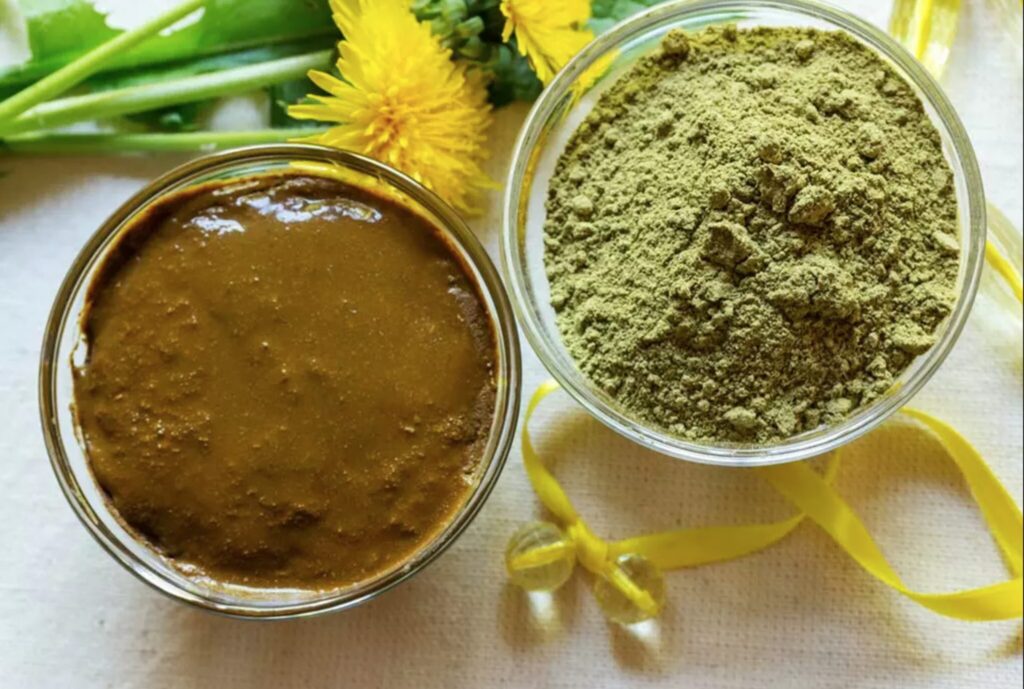
Henna in Morocco is more than just temporary body art—it’s a living tradition. Derived from the powdered leaves of the henna plant, this natural dye has been used for thousands of years in ceremonies, rites of passage, and aesthetic decoration.
Traditionally, henna is applied to the hands, feet, and even hair using intricate, symbolic designs that can represent joy, protection, or celebration. It plays a central role in Moroccan weddings, baby showers (known as aqiqa), and religious festivals like Eid.
The practice has strong ties to Amazigh (Berber) culture and is still widely used across Morocco, from the Sahara to the High Atlas Mountains. Henna designs vary by region, often reflecting local history and tribal symbolism.
Where to Experience Moroccan Henna
1. Marrakech – The Heart of Henna Culture
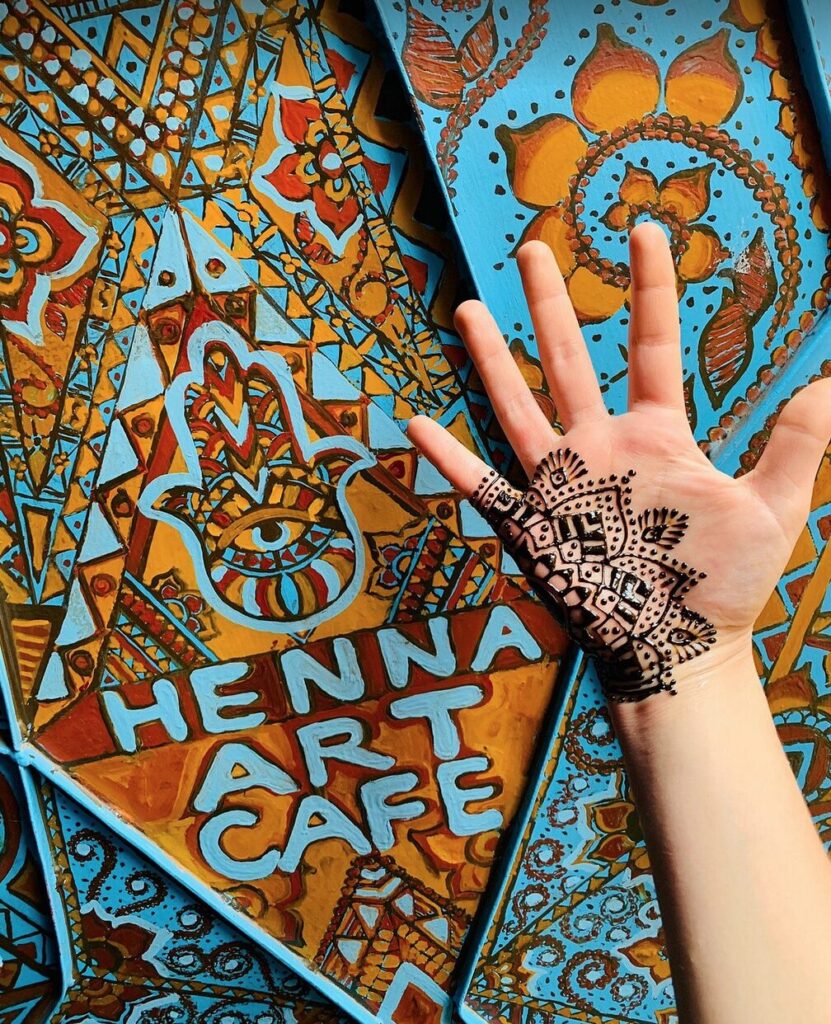
Marrakech is one of the best cities to witness the magic of Moroccan henna. Visit the Henna Art Café, a cultural gem nestled in the medina, where local artists create traditional and contemporary designs using safe, natural henna. Many salons here offer custom patterns and even private sessions.
2. Fes – The Spiritual Capital
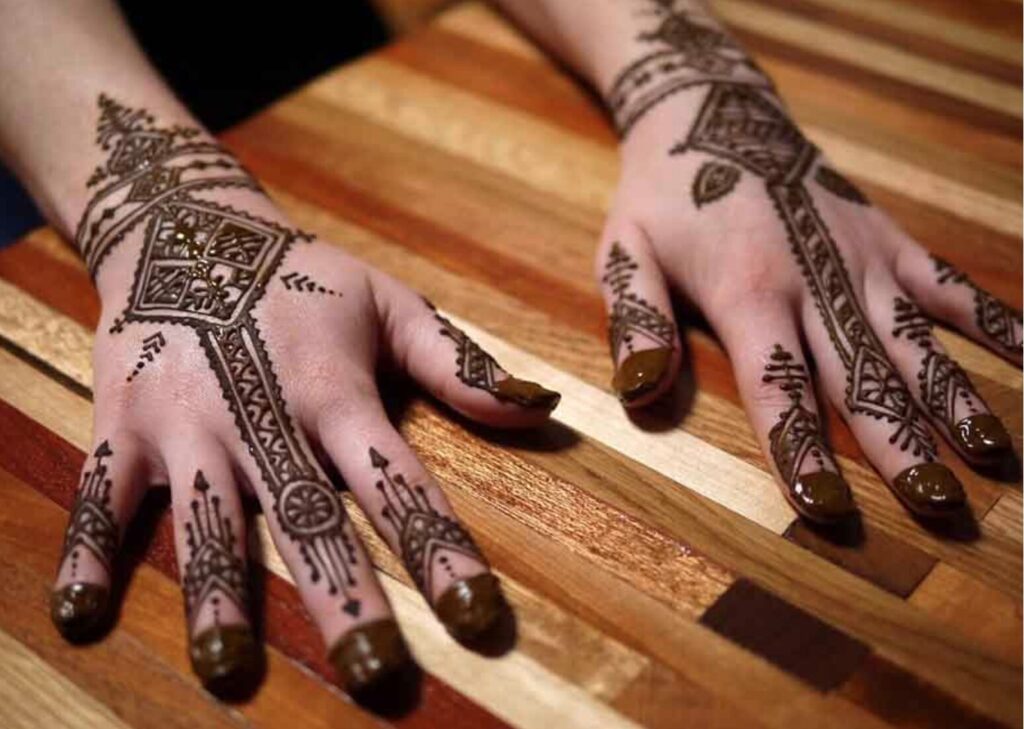
In the ancient city of Fes, henna takes on a sacred element. Brides-to-be undergo elaborate henna rituals as a symbol of purity and protection. If you’re lucky, you might be invited to a local wedding or festival where these ceremonies unfold.
3. Rural Villages and Souks
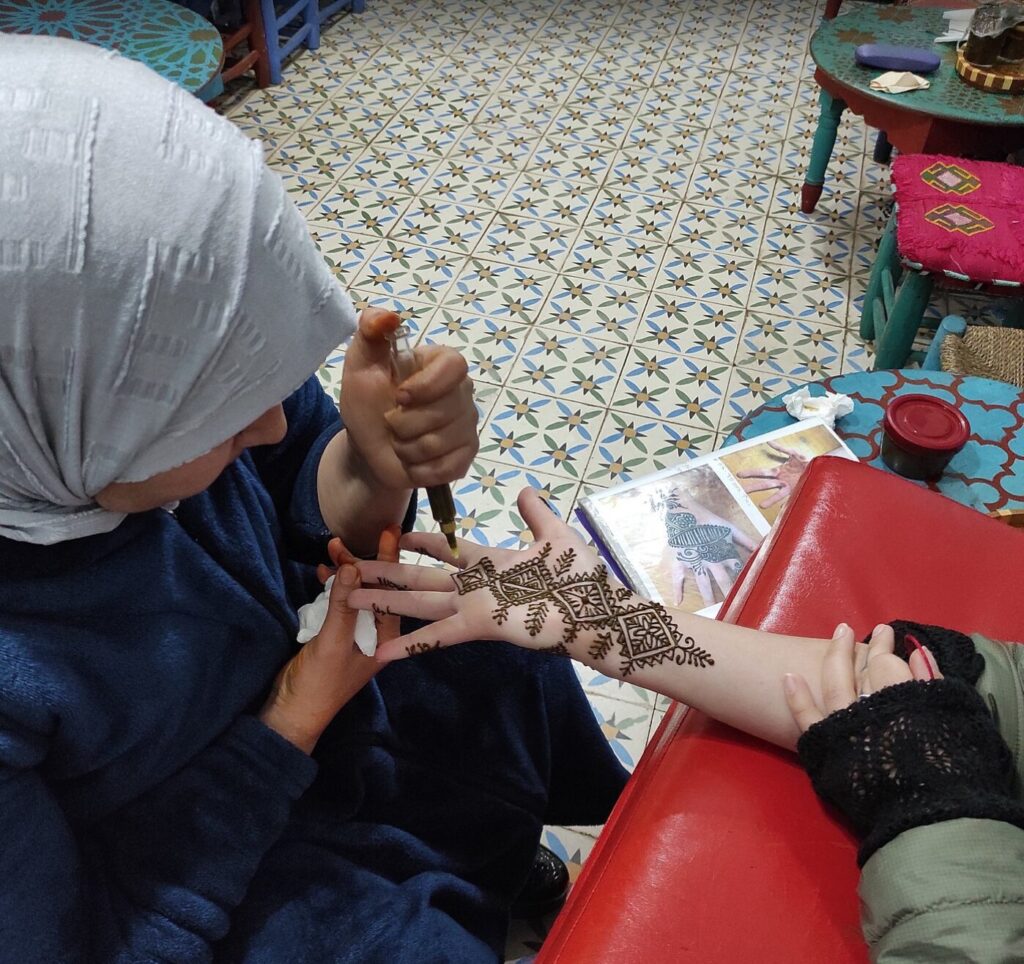
Venture into the countryside or explore weekly souks, and you’ll find henna artists offering their craft for just a few dirhams. These encounters often come with warm conversation and authentic insight into Moroccan life.
Travel Tips & Cultural Insights
Natural vs. Chemical Henna
Always opt for natural henna, which is brown or dark green in color and safe for the skin. Avoid black henna, which contains harmful chemicals like PPD. When in doubt, ask to see the ingredients.
When to Get Henna Done
If you’re planning to attend a celebration or just want to enjoy your design throughout your trip, get your henna done 1–2 days before a major event. Designs last anywhere from 7 to 21 days depending on skin type and care.
Respect the Traditions
While henna is available to everyone, remember that in Morocco, it’s deeply tied to spirituality, femininity, and cultural pride. When participating in a henna session, approach it with curiosity and respect.
Stories from the Road: Travelers & Henna
Lucia from Spain: A Wedding to Remember
Lucia, a traveler from Seville, found herself invited to a Berber wedding in the village of Aït Benhaddou. “The bride’s henna ceremony lasted hours, and every swirl had meaning,” she recalls. “They even painted a small flower on my hand as a guest—it felt like an honor.”
James from Canada: Henna in the Sahara
While staying in Merzouga near the Erg Chebbi dunes, James met a local artist who offered to apply henna while sharing stories of the desert. “It was peaceful, sitting under the stars with the scent of the henna drying on my skin. I never expected such a spiritual experience.”
Best Times to Experience Henna in Morocco
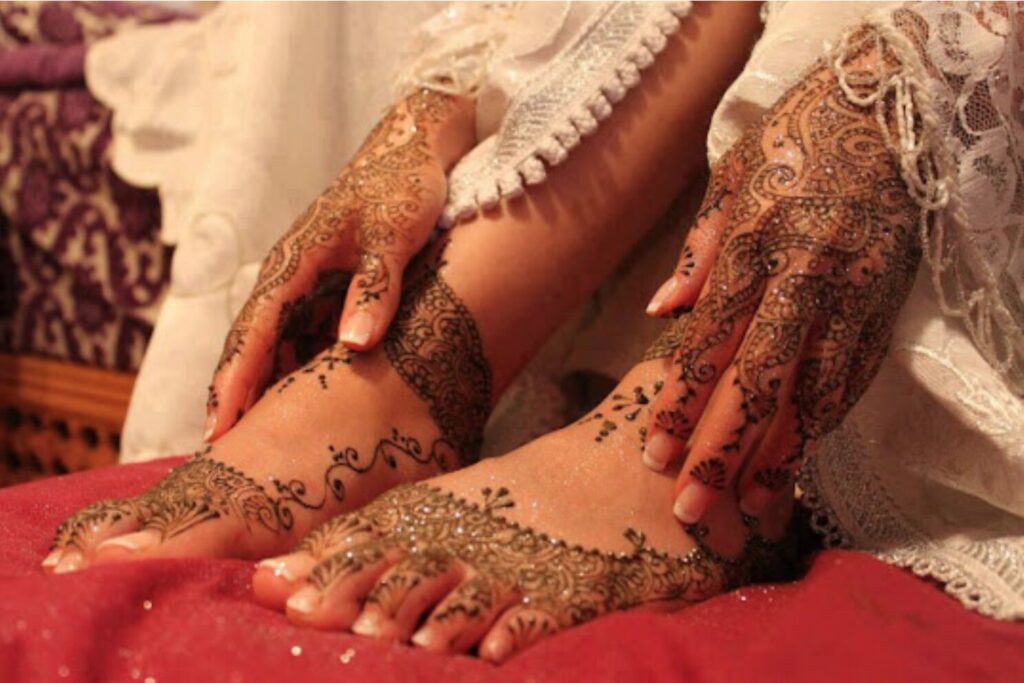
Spring and Fall: Perfect Seasons
March to May and September to November are ideal for travel. The weather is pleasant, and you’ll often find festivals like Moussem Tan-Tan or the Rose Festival in Kalaat M’Gouna, where henna artists gather in celebration.
Wedding Season (June–August)
Many Moroccan weddings take place in the summer months. With a bit of local connection, you may witness a henna night (Laylat al Henna)—a stunning pre-wedding event filled with music, laughter, and flowing patterns of henna.
Frequently Asked Questions About Moroccan Henna
What is the meaning behind Moroccan henna designs?
Henna designs often carry symbolic meaning—protection, fertility, joy, or spiritual blessings. Common motifs include spirals (eternity), eyes (warding off evil), and flowers (beauty and growth).
Is it safe for tourists to get henna in Morocco?
Yes, as long as you choose reputable salons or artists using natural henna. Avoid black henna, which can cause skin reactions due to added chemicals.
How long does Moroccan henna last?
Typically, henna stains the skin for 1 to 3 weeks. Hands and feet retain the color longer due to thicker skin and more heat.
Can men get henna in Morocco?
While traditionally associated with women, men also use henna, particularly during religious festivals. As a tourist, you’re welcome to try it too—just choose a design you’re comfortable with.
Where can I buy natural Moroccan henna?
Natural henna powder is widely available in Moroccan souks, herbal shops (herboristes), and markets. Make sure it’s pure with no added dyes or chemicals.
Conclusion: Make Henna Part of Your Moroccan Journey
From bustling city medinas to quiet village homes, Moroccan Henna: The Art of Colors and Traditional Designs offers a unique lens into the country’s heart and heritage. It’s more than decoration—it’s storytelling, protection, and celebration written on the skin.
Whether you’re a cultural explorer or simply curious, don’t leave Morocco without letting the warm touch of henna connect you to its living traditions.
Ready to experience it yourself?
Plan your next Moroccan adventure today, and don’t forget to explore more on Skies of Morocco for tips, stories, and destination guides.


